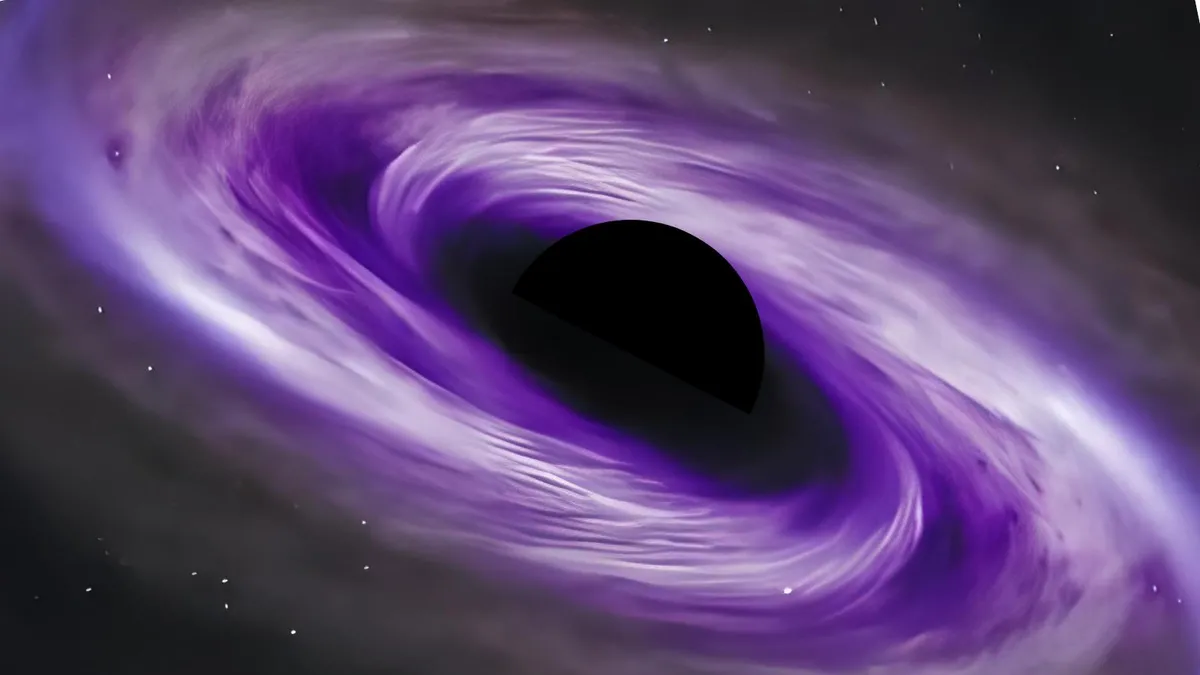
In a groundbreaking study, scientists have raised a fascinating question: could black holes transform the remnants of dead stars into dark energy, the enigmatic force driving the acceleration of the universe's expansion? This innovative theory suggests that black holes might actually function as tiny bubbles of dark energy, potentially resolving numerous inconsistencies in our current cosmological models.
The foundation of this theory lies in the concept that when massive stars collapse after exhausting their nuclear fusion fuel, they become black holes. If the new hypothesis, known as the Cosmologically Coupled Black Hole (CCBH) theory, holds true, it implies that the transformation of a massive stellar core into a black hole equates to the conversion of stellar matter into dark energy. This idea was inspired by recent findings from the Dark Energy Spectroscopic Instrument (DESI), which suggest that the strength of dark energy—accounting for approximately 68% of the universe's total matter and energy—is not constant, as previously assumed.
Historically, scientific progress has involved generating numerous hypotheses and rigorously testing them. As Steve Ahlen, a researcher at Boston University and part of the DESI team, noted, “You come up with as many ideas as you can and you shoot them down as fast as you can.” This approach is essential, especially when confronted with the numerous mysteries that our universe presents.
The CCBH hypothesis was initially proposed five years ago by Kevin Croker from Arizona State University and Duncan Farrah from the University of Hawaii. Since its inception, many researchers have explored the unconventional notion of black holes as droplets of dark energy, expanding on this mathematically robust idea.
The researchers connected the accelerated expansion of the universe to DESI's observations of galaxies dating back approximately 10 billion years. These observations indicate a decrease in the amount of matter in the cosmic energy budget compared to the conditions present during the Big Bang. The interplay between matter and dark energy is crucial: matter tends to slow cosmic expansion, while dark energy accelerates it. Therefore, if the CCBH hypothesis is accurate, the process of converting matter into dark energy via black holes would elucidate the changing rate of the universe's expansion, known as the Hubble constant.
While dark energy currently dominates the universe, it was not always the case. Around 9 to 10 billion years post-Big Bang, something caused dark energy to surpass the influence of matter and gravity. The CCBH hypothesis posits that dark energy did not possess an arbitrary strength in different epochs of cosmic history. Instead, it emerged after the universe expanded and cooled sufficiently to allow the birth and death of stars. This suggests that the amount of dark energy and its influence at any given time should correlate with star formation rates.
The team’s collaboration with DESI was bolstered by the alignment of DESI’s changing dark energy observations with star formation rates documented by both the Hubble Space Telescope and the James Webb Space Telescope (JWST). According to Farrah, “The CCBH hypothesis quantifiably links phenomena you would not initially expect to be related.” This connection challenges traditional linear thinking in cosmology.
One of the intriguing implications of the CCBH hypothesis is its potential to resolve questions surrounding the mass of neutrinos. Known as "ghost particles," neutrinos are chargeless and nearly massless particles that travel through matter without interaction. Despite being the second most abundant particles in the universe, determining their mass has proven to be a complex challenge.
Current theories suggest that neutrinos must have non-zero masses, but accurately calculating these masses has been problematic. Some models even propose a troubling negative mass for neutrinos, which contradicts established physics. However, the CCBH hypothesis alleviates this issue by accounting for the transformation of baryons—protons and neutrons—into dark energy, thereby allowing neutrinos to contribute to the matter-energy budget without resorting to negative mass scenarios.
While the CCBH hypothesis is a promising step toward establishing a new understanding of cosmology, extensive further research and rigorous scrutiny by the scientific community are essential before it can be deemed a valid paradigm. Ahlen emphasizes that this is the essence of scientific inquiry.
In the interim, DESI collaborators celebrate the implications of their findings, showcasing the capability of their data to support unconventional hypotheses. As Gregory Tarlé, a scientist involved in the DESI project, remarked, “This is so cool, to be at this point after working on an experiment for so long. It’s just wonderful.” The journey of discovery continues as researchers delve deeper into the mysteries of the universe.